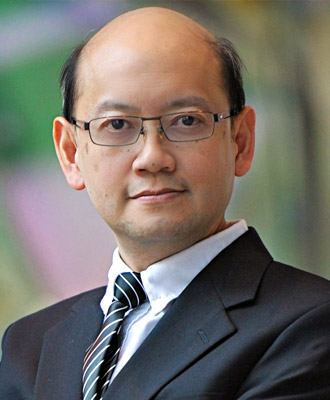To attend, please RSVP to epp@cseg.ca.
Unless we have exceeded the allowable number of people for the auditorium, we will not be replying to your email.
LunchBox Geophysics is free! Simply bring your own lunch (refreshments provided) and enjoy.
Abstract
For many reasons, such as acquisition limitations, economic constraints, and merging data of various shooting parameters, seismic data needs to be regularized and interpolated. 5D interpolation of 3D prestack data has been an important application in seismic processing.
Of many elegant methods, 5D minimum weighted norm interpolation (MWNI) is the most popular method due to its ability to closely maintain the original input trace characteristics, including signal-to-noise, better than any other known method. Many industry 5D interpolation techniques, including 5D MWNI, start data fitting from the stable low frequency slices, one slice at a time, and recursively layer-by-layer work their way up to higher frequencies. This unconstrained fitting can lead to inaccurate results under challenging scenarios such as meager data support, upsampling of regularly missing data, or aliased dips.
Recently, we proposed the 6D interpolation method which has an additional dimension along reflector multiangular directions to be added to the 5D MWNI in order to guide the a priori model in the frequency-wavenumber domain. Angular weights connect data information across all frequency-wavenumbers globally, which is crucial to de-aliasing of data, but is completely missing in the conventional 5D MWNI.
Talk will cover:
Biography
Mark Ng graduated with a B.Eng (distinction) from Concordia University in 1981 and an M.Sc. from the University of Calgary in 1983, both in electrical engineering specializing in signal processing.
He has been working as a research geophysicist at Geo-X Systems and Divestco for the past 30 years. He was invited to teach at the University of Changsha, China for a year in 1991.
Four of Mark’s papers received SEG and CSEG recognition: ‘Super high resolution Radon transform’, and ‘Time-shift imaging for seismic migration interpolation’ both ranked among the top 30 papers presented in the 2004 and 2007 SEG Annual International Meetings respectively; he later received an Honorable Mention in 2009, and a Best Paper Award in the 2016 GeoConvention for ‘6D interpolation’.
- Different 5D methods.
- Five challenging scenarios for interpolation methods.
- Guess-to-impress a priori impression is more important than you think.
- Angular weight is the plumb line reference for laying foundations of frequencies.
- 6D is looking at the forest while 5D is looking at the tree.
- 6D provides a natural de-alias feature.
- Examples.





